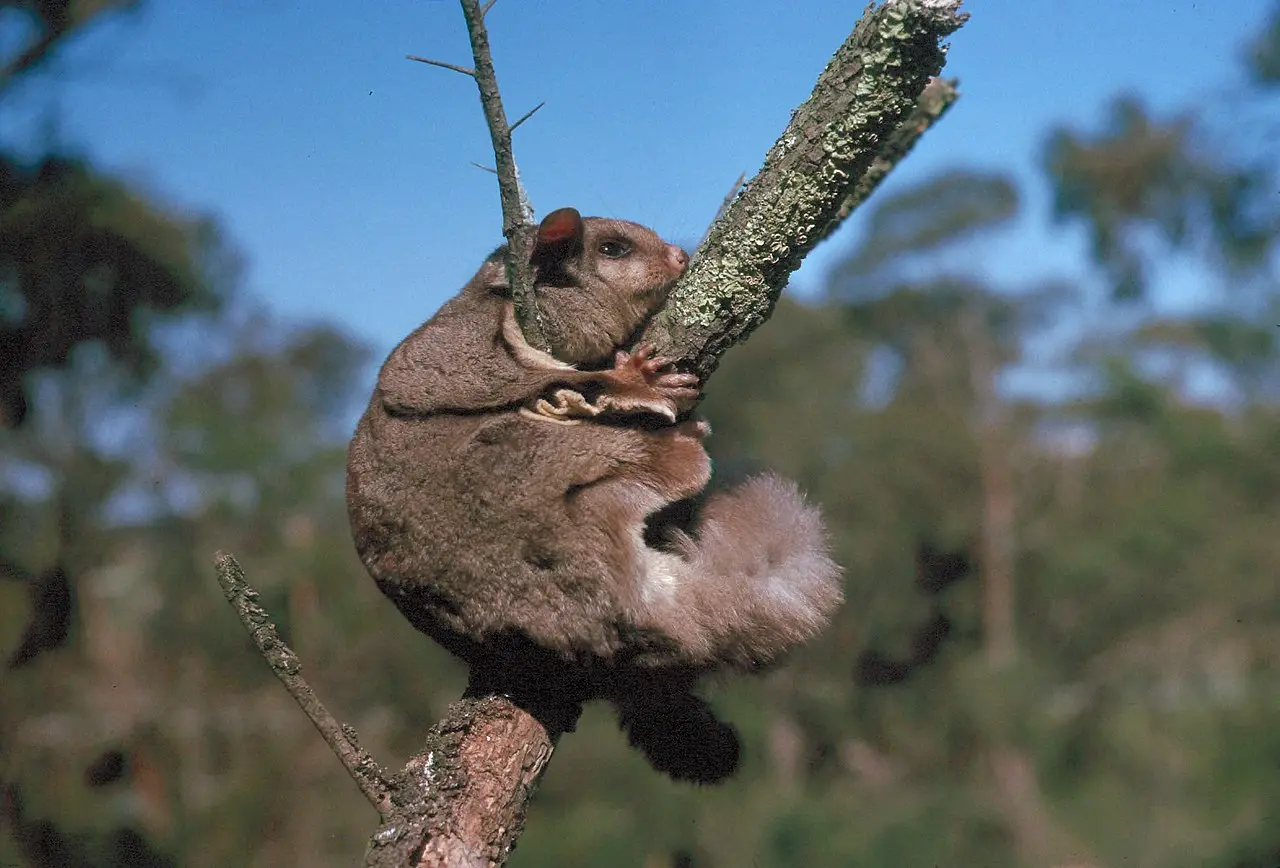Understanding Sugar Gliders behavior is an essential step for both admirers and potential pet owners of these enchanting creatures. Known for their unique gliding ability, social disposition, and captivating personality, Sugar Gliders can make charming companions.
Gaining insight into their needs, preferences, and unconventional traits allows for the creation of a conducive environment to help them flourish.
This guide aims to provide a comprehensive look at Sugar Gliders behavior, covering topics such as their nocturnal activities, social dynamics, playful nature, and more.
Exploring the Sugar Gliders Behavior
Understanding a sugar gliders behavior provides essential insights into their captivating personalities.
The Fascinating World of Social Behavior
In their natural habitats, which primarily include Australia, Indonesia, and Papua New Guinea, sugar gliders live in social structures known as colonies. These are family-centered clusters that can have up to 30 individuals. They depend on each other for warmth and protection — showcasing just how interdependent these critters are.
The Beauty of Bonding
When these marsupials feel secure and comfortable, they’ll express various endearing behaviors to their colony members or their human friends.
For example:
- Cuddling: One of the heartwarming behaviors that a pet sugar glider displays when it has created a bond is cuddling. They are prone to catching a nap while resting on their human friends, which demonstrates their trust.
- Grooming: Another form of affiliative behavior in sugar gliders is mutual grooming. This is a behavior that solidifies social bonds and helps maintain hygiene.
Leadership Hierarchy and Aggression
As it is with many other animals, sugar glider colonies often have top-ranking, or dominant, individuals. These leaders may resort to aggressive displays to maintain these ranks.
The Language of Vocalizations
Sugar gliders may not speak human languages, but they do have a wide range of vocalizations to communicate with each other and their human caretakers. Deciphering these sounds allows one to understand their emotional and physical states better.
- Happiness (Chirping): When a sugar glider is pleased or content, it might produce mild chirping sounds, signaling a sense of satisfaction or well-being.
- Warning (Hissing): Hissing is a behavior gauged towards intimidation and warding off perceived threats. If your sugar glider hisses, it’s best to give them some space.
- Distress (Crabbing): When truly alarmed or upset, sugar gliders will produce a peculiar crabbing sound. It’s their primary defense tool against perceived dangers.
- Attention Seeking (Barking): Barking — which interestingly sounds like a small dog barking — is used to express various needs, ranging from seeking attention, signalling danger, or expressing boredom or loneliness.
Nocturnal Wonders
It’s important to remember that sugar gliders are nocturnal creatures. Their vibrant activities, from foraging to socializing, generally kick into full gear at night.
- Daytime Snoozing: Sugar gliders are day sleepers. They love finding cozy hiding spots to rest during the day time, such as specially designed pouches or even little nests.
- Nighttime Foraging: In the wild, sugar gliders have a varied diet that includes fruits, insects, and even small vertebrates. Pet owners should mimic this wide array of foods to keep their pets healthy and satisfied.
The Art of Gliding
The name “sugar glider” is derived from their unique ability to glide through the air. These marsupials have a thin skin called a patagium that stretches between their limbs, facilitating them to glide over impressive distances.
- Multipurpose Gliding: Gliding is a multi-use tool for sugar gliders. It’s their escape mechanism from predators, mode of transportation for food hunt, and even a way of interacting with other gliders.
- Gliding in Captivity: Although captive sugar gliders may not frequently exhibit their gliding skills, owners are encouraged to provide an environment conducive to this natural behavior, to ensure their physical and mental well-being.
Fun Facts About Sugar Gliders Behavior
Social Bonds and Group Dynamics
- Sugar Gliders thrive in groups called colonies
- They form close-knit bonds to nurture a sense of security and emotional well-being
- Grooming each other helps maintain good hygiene
- Human companionship is beneficial, but can’t replace bonds with other Sugar Gliders
Nighttime Activities
- Being nocturnal, Sugar Gliders are most active during the night
- Their diet primarily consists of nectar, fruit, sap, and insects
- They sleep in their nesting environment during the day
Gliding through the Air
- Sugar Gliders have the ability to glide gracefully up to 150 feet
- A skin membrane called the ‘patagium’ extends from the wrist to the ankle, enabling gliding capabilities
Communication Skills
- Sugar Gliders produce various sounds, such as barks, hisses, and chirps
- These vocalizations convey different messages, like warning alerts or calling for partners
- They use scent glands to mark territory and identify themselves to others
Playful and Adventurous Nature
- Sugar Gliders are attracted to games and new objects
- They enjoy activities like climbing, swinging, and racing around
- Providing a stimulating environment promotes their happiness
Sense of Cleanliness
- Sugar Gliders prioritize grooming and maintaining a clean habitat
- They spend ample time ensuring good hygiene and a healthy living area
- Proper maintenance of their living environment is crucial for their well-being
An Essential Appendage: The Tail
- Sugar Gliders have long, bushy tails for stabilizing and balancing during gliding and running
- They do not have prehensile tails, and thus can’t use them for grasping or hanging
- They occasionally use their tails to hold and transport objects
Being equipped with knowledge on sugar gliders’ behavior helps create an optimum environment for these endearing beings, thus enhancing their quality of life and enriching our pet-caring experience.
